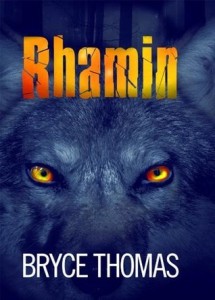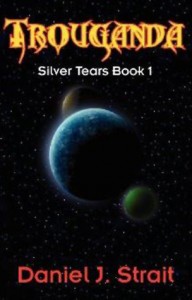 I grabbed this book off of the free KDP list on a whim.
I grabbed this book off of the free KDP list on a whim.
Rhamin is the leader of a pack. His rival, who cannot depose him, resorts to doing bad things to try, which results in a young boy, his sister and their parents entering the story. At a time when some wolves are in need of help to survive, one of the pack discovers that it can communicate with the boy and it is the relationship that builds between the wolves and the family that leads to a dangerous and exciting adventure for them all.
With a good element of the paranormal and a couple of humourous characters as well, the story is told from the wolves’ perspective, taking readers inside the pack so that they see everything through a wolf’s eyes. Rhamin is a bestselling light, fantasy adventure with lots of danger, drama and suspense. It has an unusual twist and a knife edge climax that keeps you turning the pages to the very last page.
Review:
I don’t think the description does Bryce Thomas or the writing in this book credit. Rhamin is refreshing. The Paranormal genre is flooded with hot-blooded males, and while I like that too, I greatly appreciated the change Rhamin presents. The alpha male here is just that, an alpha in a wolf pack. Not a werewolf pack, but honest to goodness timber wolves. (Well, it never clarifies that they are timber wolves, but as large wolves residing in North America, they probably are supposed to be.) Granted they are heavily anthropomorphized, possessing intellect, speech, the concept of numerics, etc, but they’re still just wolves.
There were quite a few wolf-related info-drops that slowed things down a little, and some of the speech, especially between Rasci and Ben, seemed a little stilted and unnatural. Though, to be fair, so is their whole situation, so it might not be inappropriate for their communication to be awkward. But on the whole, I really enjoyed the book.
Because I recently had a conversation with someone about the messages that books present to readers, young readers in particular, I stopped to appraise Rhamin‘s messages. The wolves of Rhamin’s pack are fabulous role models and we could all learn a little bit from them about extended familial love and loyalty, accepting ourselves and our own skills and limitations, accepting others despite their differences, forgiving your enemies, and the importance of dedication to a task.
If you are expecting a heavy-hitting PNR, go elsewhere, but if you’d like a sweet paranormal adventure, this is the book for you. You’ll also learn a little bit of history if you read it afterward, which I always like.


